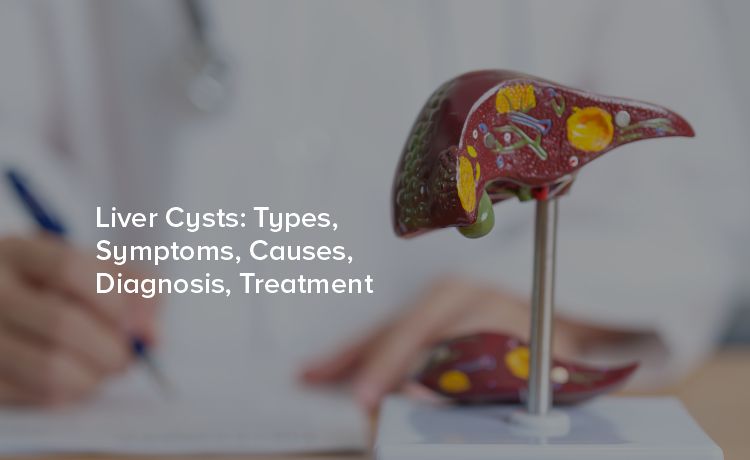
The liver is an essential organ that performs a multitude of pivotal functions in the human body, ranging from filtering toxins from the blood to aiding in digestion. However, certain conditions can affect the liver's health and cause distressing symptoms. One such condition is liver cysts, which can be silent and benign or become a significant health concern if complications arise.
Liver cysts manifest as fluid-filled sacs within the liver tissue, and understanding this condition is crucial for potential sufferers, their families, and healthcare providers.
Liver cysts, also known as hepatic cysts, are fluid-filled sacs within the liver. They can vary significantly in size and number, and they may be symptomatic or asymptomatic. Generally speaking, liver cysts are classified as simple, polycystic, and neoplastic.
Simple liver cysts are the most common type and are usually benign. They consist of a single sac and are usually asymptomatic unless they become very large. Polycystic liver disease is a genetic condition characterized by the growth of multiple cysts within the liver. Neoplastic liver cysts, on the other hand, are growths that can sometimes be cancerous (malignant) but are often benign.
The development of liver cysts can be influenced by several factors:
Gender: Women are more likely to develop liver cysts than men.
Age: Most liver cysts are diagnosed in people over 40 years of age.
Genetic Conditions: Polycystic liver disease and other congenital conditions can increase the risk of developing liver cysts.
Parasites: Some parasitic infections can lead to the formation of liver cysts.
Overall, the exact cause of liver cysts is not always clear, and the risk factors can vary depending on the type of cyst.
Simple liver cysts are more common in women and are typically discovered incidentally through imaging tests for unrelated health issues. They are considered to be congenital or developmental.
Polycystic liver disease is a genetic disorder that results in the growth of numerous cysts in the liver. These cysts can be asymptomatic or cause significant hepatomegaly, or enlargement of the liver.
Neoplastic cysts in the liver are less common and may be caused by various underlying conditions, including cancer. Neoplastic cysts can appear as part of liver tumors.
The majority of individuals living with liver cysts may not experience any symptoms. However, some common symptoms may include:
Rare complications, such as infection or rupture, can cause severe symptoms that require immediate medical attention.
Some people are born with liver cysts due to congenital disorders, such as polycystic liver disease, which is associated with conditions like autosomal dominant polycystic kidney disease.
Certain parasitic infections, such as echinococcus granulosus infection, can lead to the development of cysts in the liver.
Physical damage to the liver can cause cysts to form at the site of injury as part of the healing process.
Liver conditions, such as biliary cirrhosis or Caroli disease, can be associated with the development of liver cysts.
Most liver cysts are diagnosed through imaging tests, including ultrasound, CT scans, and MRI scans, which provide detailed images that allow healthcare professionals to examine the liver and any abnormalities within it.
During a liver biopsy, a small sample of liver tissue is collected and analyzed under a microscope to determine the cause of liver cysts and to rule out cancer or other underlying conditions.
Small, simple liver cysts that are not causing symptoms can be monitored over time with periodic imaging tests to ensure they are not growing or causing any health issues.
Larger cysts that are symptomatic or causing complications might require drainage, a procedure where a needle is inserted into the cyst to remove its contents.
A type of drainage, sclerotherapy involves aspirating the cyst contents and then filling the cavity with a special solution that causes the cyst to collapse and prevents it from refilling with fluid.
Surgery for liver cysts is typically reserved for the most severe cases, such as large cysts that are causing symptoms or complicated by infection or rupture.
Liver cysts that become infected require immediate medical attention and may need to be drained and treated with antibiotics.
Cysts can rupture, causing intense pain and possibly leading to life-threatening infection or bleeding. If a liver cyst ruptures, it is a medical emergency, and treatment should be sought without delay.
Pain and other symptoms related to liver cysts can be managed through a combination of medications and lifestyle modifications, such as avoiding certain foods that may exacerbate symptoms.
The outlook for individuals diagnosed with liver cysts depends on the type of cyst, the severity of symptoms, and the presence of complications. Most liver cysts are benign and can be managed effectively, allowing individuals to live a normal life.
In cases where liver cysts are large or causing severe complications, the long-term outlook may be less favorable, and ongoing treatment and monitoring will be necessary.
Participating in clinical trials can provide individuals with liver cysts access to new and experimental treatments that may improve their condition or quality of life. Healthcare providers can help patients explore these options and their eligibility for trials.
While lifestyle changes may not directly treat liver cysts, they can help manage associated symptoms and promote overall liver health. These changes may include maintaining a healthy diet, exercising regularly, and avoiding excessive alcohol consumption.
Liver cysts are varied and complex, and a comprehensive understanding of their types, causes, symptoms, diagnosis, and treatment options is vital. Knowledge empowers patients and healthcare providers to make informed decisions that lead to effective management and treatment. Book your consultation with our liver disease treatment experts by booking an appointment today. Citizens Specialty Hospital offers the best treatment for liver disease in Hyderabad.